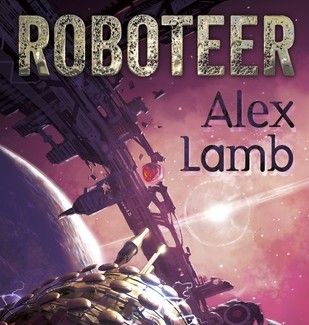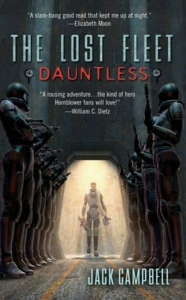John Geary is very very cold. The psychological effects of having spent a hundred years in hibernation, frozen in a capsule after a battle in which he was presumed killed. That battle was the opening salvo in a war that has since continued unabated, losses on both sides mounting relentlessly.
John Geary is very famous. His actions and sacrifices during the battle resulted in many lives saved. Posthumously, he has become the poster child for generations of ever younger warriors and ship captains. As war casualties have killed the senior officers, the skills, strategies and tactics necessary to plan and execute a fleet engagement have been lost before they could be handed down. The fleet fights bravely, valiantly, but bluntly, with little in the way of intelligent battle planning.
John Geary is thrust by circumstance into the role of Fleet Admiral shortly after he awakens. For him four weeks have passed. For the fleet a hundred years, and to them, he is either a legend returned from the dead, or an outdated relic from the past. Faced with inexperienced crew, untrained ship captains, a philosophy of war in which bravery outranks tactics and a navy at odds with the values he was taught to respect as an officer, can Captain “Black Jack” Geary take the Alliance Fleet back to the safety of Alliance Space, or will the many challenges facing him overcome the advantage of his ancient, and yet vastly superior knowledge of engagement strategy, battle tactics and fleet management?
The concept of this story is exceptional. Geary is a perfect hero – the one who is thrust into the position of leader not just because he is famous, but also because he can see that everyone around him is completely lacking in the skills necessary to do more than charge at the enemy en masse. He reluctantly recognizes that, even if his seniority is based on an accident of history, he really is the only person in the fleet with the knowledge and skills to run an engagement intelligently. The only one with a chance of getting these sailors home.
Much is made of his legendary status, with ship captains under his command predictably splitting into groups that support or even idolize him, and groups who cannot accept the idea that a controlled engagement and long-term view of the conflict is better than the virtue of direct confrontation and the courage and self-sacrifice this represents. To some, he appears cowardly and at odds with the way history has depicted him.
Perhaps too much is made of it, in fact, because after several chapters, even though we understand that Geary is conflicted, even though we understand that some of the ship captains are against him, even though we know he is embarrassed by the way people idolize him, we still get long passages during which he walks the ship, agonizes over the way he is perceived, or has long disclosure sessions with the only civilian representative on board, a woman who makes much of the threat he poses as a living god who could seek to rule the Alliance as easily as serve it. She unfortunately seems to lack the finesse to understand that sometimes you deal with what’s in front of you before tacking the very theoretical and unproven problems of many months hence. She gets quite annoying, actually.
If the story’s emphasis lies elsewhere than character development, this is likely because Jack Campbell, a.k.a. John G. Henry, is a retired US Navy officer, and combat is what he knows. This is apparent in the battle scenes which are long, elaborate, and well thought through. The great strengths of this novel and the series as a whole rests in two things – the original idea of a world in which war has waged for so long that the art of war itself has been mostly lost, and both sides are reduced to flailing at each other with little in the way of tactics; and the well drawn military engagements that demonstrate the effectiveness of a military mind at the head of a fleet, especially when faced with an enemy that is not used to an opponent that does more than merely bludgeon.
But a story requires characters to bring it to life, and while Geary is very solidly depicted and rendered, few of the other characters benefit from that degree of complexity, appearing more as foils to bring contrast to Geary’s character than individuals in their own right. Each character has his or her place – The Co-President is Geary’s conscience (although she does more to confuse than to settle him), Captain Desjani is his day-to-day mirror, Duellos is his encouragement, remaining at the end of almost every single captain’s conference to advise and encourage him, Numos represents his opposition within the fleet, blindly hating and resenting anything that he says or does, and who can always be relied upon to disobey orders in the most damaging way. In the end, their behaviour is so predictable that they’re useful more for exposition than as true story elements in their own right. The only character truly in focus is Geary.
But military science fiction can get away with this, because we don’t necessarily read it for the characters – we want the battles. It’s a shame we can’t have both, but a novelist with a strong grasp of character would find it difficult – without major effort on their part – to describe battles in as convincing a manner as Campbell. So it’s a trade-off I’m willing to accept in a novel that is unashamedly military in its ambitions.
This is a good story, I hope that as I make my way through the series the characterisation becomes more complex. I’ve already read the second novel and not to pre-empt my review, it hasn’t really improved all that much in this particular area, but my hopes remain. There are further elements that are only hinted at that could become very interesting as the story develops – nobody seems to understand why these two groups are at war in the first place, for example, and that is something else that someone from the past can have an influence over.
I enjoyed this first look at Geary’s adventures, it’s a bit pulpy in the sense that I raced through it extremely fast, but it was satisfying nonetheless (if a little expensive in a dollars-per-hour-of-reading calculation).






